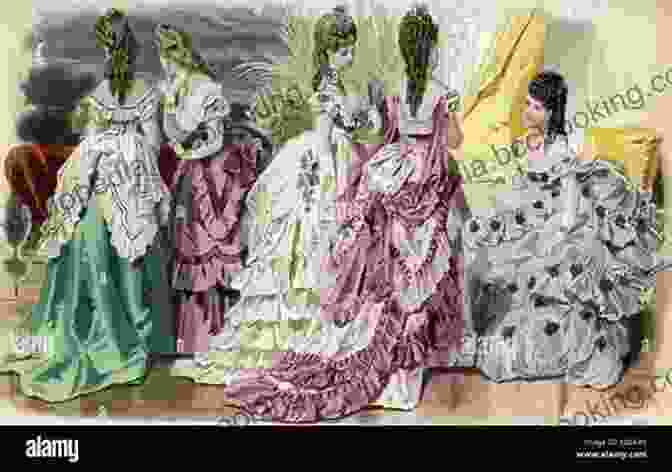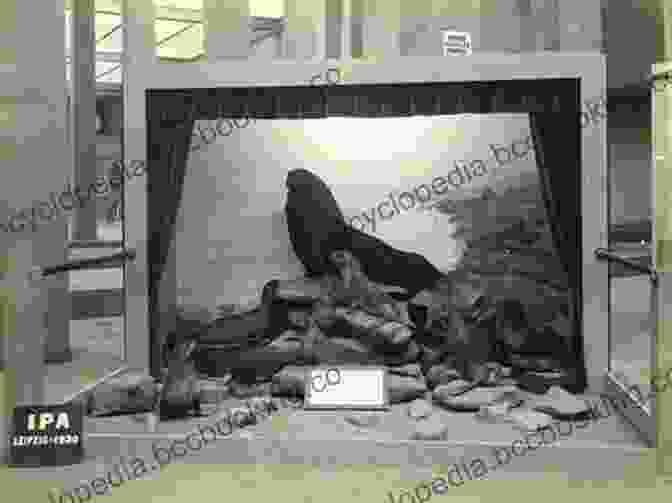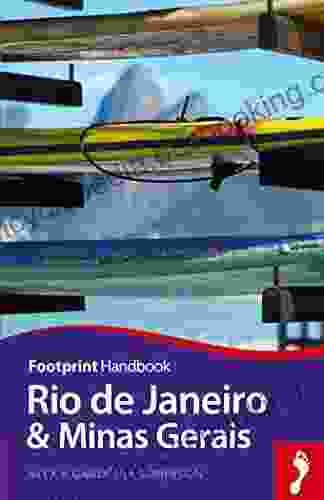Inside The German Fur Capital Leipzig 1870 And 1939 Routledge International

Leipzig: The Heart of the German Fur Trade
In the bustling streets of Leipzig, Germany, from 1870 to 1939, a thriving fur trade flourished, transforming the city into the undisputed fur capital of Germany. Leipzig became a global hub for the production, distribution, and sale of luxurious fur garments, attracting merchants, artisans, and fashion enthusiasts from far and wide.
The growth of Leipzig's fur industry was fueled by several factors. The city's central location in Europe made it a convenient meeting point for traders from all corners of the continent. Leipzig's well-established trade fairs also provided an ideal platform for fur merchants to showcase their wares and connect with potential buyers.
5 out of 5
| Language | : | English |
| File size | : | 2680 KB |
| Text-to-Speech | : | Enabled |
| Screen Reader | : | Supported |
| Enhanced typesetting | : | Enabled |
| Word Wise | : | Enabled |
| Print length | : | 248 pages |

The Rise of the Fur Barons
As Leipzig's fur trade flourished, a new class of wealthy and influential fur barons emerged. These individuals made vast fortunes through their involvement in the fur industry, amassing wealth and power that rivaled that of the city's traditional elite.
The fur barons often invested their wealth in grand mansions and lavish lifestyles. They built opulent palaces in Leipzig's most prestigious neighborhoods, creating a visible display of their newfound status. Their wealth also had a transformative impact on the city's cultural and social landscape.

The Social Impact of the Fur Trade
The rise of Leipzig's fur industry had a profound impact on the city's social fabric. The fur trade created employment opportunities for thousands of workers, including furriers, leatherworkers, and garment makers. The influx of skilled artisans and laborers contributed to Leipzig's growing population and economic prosperity.
However, the fur trade also exacerbated Leipzig's social divide. The wealth and opulence of the fur barons contrasted sharply with the living conditions of the working class. Harsh working conditions and low wages in the fur industry led to labor unrest and social tensions.

Leipzig's Legacy as a Fur Capital
Leipzig's reign as the German fur capital came to an abrupt end with the outbreak of World War II. The war disrupted trade and production, forcing many fur businesses to close down. After the war, Leipzig's fur industry struggled to regain its former glory, facing competition from international markets and changing fashion trends.
Despite the decline of the fur trade, Leipzig's legacy as a fur capital remains. The city's historical buildings, museums, and archives continue to tell the story of its vibrant past in the fur industry. Leipzig's fur trade played a pivotal role in shaping the city's economy, social landscape, and architectural heritage.

The history of Leipzig's fur trade offers a glimpse into a bygone era of luxury, wealth, and social change. From the opulent mansions of the fur barons to the bustling fur markets, Leipzig's past as a fur capital is a testament to the city's rich cultural and economic heritage.
Today, Leipzig's fur trade may be a thing of the past, but the city's legacy as a center of fashion and luxury endures. Leipzig continues to be a vibrant and thriving metropolis, where history and modernity intertwine to create a captivating urban experience.
For those interested in delving deeper into the fascinating history of Leipzig's fur capital, the book "Inside the German Fur Capital Leipzig 1870 and 1939" by Routledge International is a valuable resource. This comprehensive and well-researched book provides a thorough account of Leipzig's fur trade, its social and cultural impact, and its enduring legacy.
5 out of 5
| Language | : | English |
| File size | : | 2680 KB |
| Text-to-Speech | : | Enabled |
| Screen Reader | : | Supported |
| Enhanced typesetting | : | Enabled |
| Word Wise | : | Enabled |
| Print length | : | 248 pages |
Do you want to contribute by writing guest posts on this blog?
Please contact us and send us a resume of previous articles that you have written.
 Book
Book Novel
Novel Page
Page Chapter
Chapter Text
Text Story
Story Genre
Genre Reader
Reader Library
Library Paperback
Paperback E-book
E-book Magazine
Magazine Newspaper
Newspaper Paragraph
Paragraph Sentence
Sentence Bookmark
Bookmark Shelf
Shelf Glossary
Glossary Bibliography
Bibliography Foreword
Foreword Preface
Preface Synopsis
Synopsis Annotation
Annotation Footnote
Footnote Manuscript
Manuscript Scroll
Scroll Codex
Codex Tome
Tome Bestseller
Bestseller Classics
Classics Library card
Library card Narrative
Narrative Biography
Biography Autobiography
Autobiography Memoir
Memoir Reference
Reference Encyclopedia
Encyclopedia Adam Rogers
Adam Rogers Alex Kava
Alex Kava Alan Anderson
Alan Anderson Adrian Wojnarowski
Adrian Wojnarowski Adam Gragg
Adam Gragg Adam Ellis
Adam Ellis Alan E Fruzzetti
Alan E Fruzzetti Adam Parkinson
Adam Parkinson Alephonsion Deng
Alephonsion Deng Abe Streep
Abe Streep Adam Zamoyski
Adam Zamoyski Aitzaz Imtiaz
Aitzaz Imtiaz Adhe Tapontsang
Adhe Tapontsang Activity Lover Press
Activity Lover Press Alastair Humphreys
Alastair Humphreys Alain Kerzoncuf
Alain Kerzoncuf Alex Epstein
Alex Epstein Alborz Azar
Alborz Azar Alessia Falsarone
Alessia Falsarone Adam Smiley Poswolsky
Adam Smiley Poswolsky
Light bulbAdvertise smarter! Our strategic ad space ensures maximum exposure. Reserve your spot today!

 Jerry HayesUnleash the Power of Useless Knowledge: A Journey through the Enlightenment...
Jerry HayesUnleash the Power of Useless Knowledge: A Journey through the Enlightenment... Jimmy ButlerFollow ·4.3k
Jimmy ButlerFollow ·4.3k Bryson HayesFollow ·19.1k
Bryson HayesFollow ·19.1k Robert ReedFollow ·2.7k
Robert ReedFollow ·2.7k Cody BlairFollow ·12.5k
Cody BlairFollow ·12.5k Roberto BolañoFollow ·13.5k
Roberto BolañoFollow ·13.5k Wesley ReedFollow ·5.5k
Wesley ReedFollow ·5.5k Bernard PowellFollow ·13.6k
Bernard PowellFollow ·13.6k José MartíFollow ·15.2k
José MartíFollow ·15.2k

 Francis Turner
Francis TurnerArt and Politics in the Shadow of Music
Music has...

 Jaylen Mitchell
Jaylen MitchellHow Algorithms Are Rewriting The Rules Of Work
The workplace is...

 Chandler Ward
Chandler WardRio de Janeiro & Minas Gerais Footprint Handbooks:...
Embark on an extraordinary adventure through...

 David Mitchell
David MitchellThe Story of Depression: Understanding and Treating a...
Delving into the Shadows of...

 Al Foster
Al FosterStatistics Done Wrong: The Woefully Complete Guide
Tired of being...

 DeShawn Powell
DeShawn PowellJulia Child's Second Act: A Tale of Triumph,...
Julia Child is an...
5 out of 5
| Language | : | English |
| File size | : | 2680 KB |
| Text-to-Speech | : | Enabled |
| Screen Reader | : | Supported |
| Enhanced typesetting | : | Enabled |
| Word Wise | : | Enabled |
| Print length | : | 248 pages |










